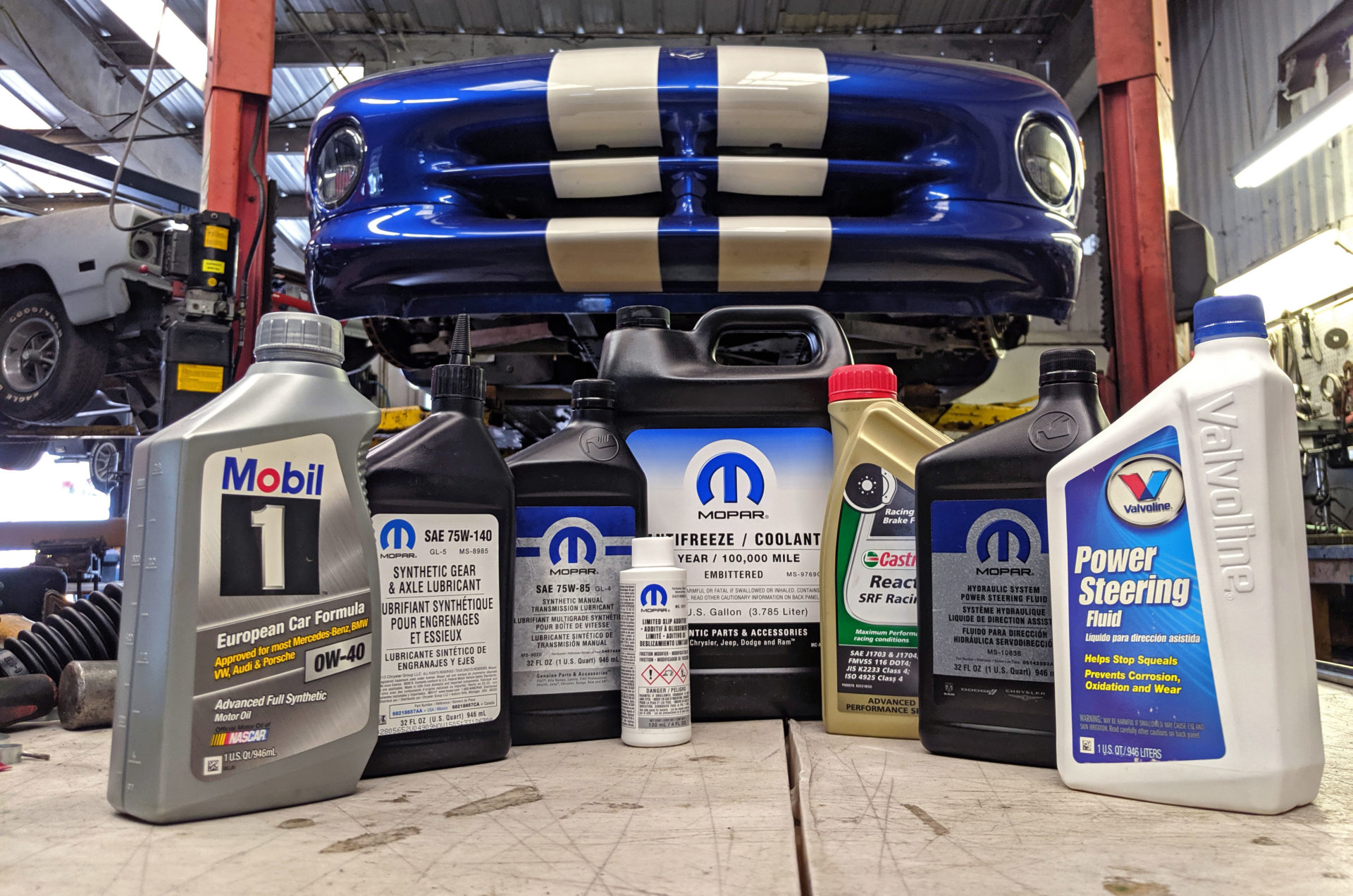It’s always important to routinely replace the fluids in a car, even if it has low mileage. We went through our 1997 Dodge Viper with less than 10K miles on the odometer to keep it in top-shape and see what age does to a car’s fluids.
First we tackled the car’s transmission fluid.
 With the car in the air, we had to remove the lower transmission cover. This beefy plate ties the frame rails together to increase torsional rigidity of the chassis.
With the car in the air, we had to remove the lower transmission cover. This beefy plate ties the frame rails together to increase torsional rigidity of the chassis.
 Ten bolts hold this plate in place and must be removed to access the transmission.
Ten bolts hold this plate in place and must be removed to access the transmission.
 Now that the plate is removed, we can see the entire Borg-Warner T-56 transmission. *In 1998, Borg Warner sold the T-56 design to Tremec.
Now that the plate is removed, we can see the entire Borg-Warner T-56 transmission. *In 1998, Borg Warner sold the T-56 design to Tremec.
 Above the transmission fluid label is the fill plug. It’s good practice to always remove the fill plug before the drain plug, just in case there’s an issue with removing the fill plug, you won’t be left stranded.
Above the transmission fluid label is the fill plug. It’s good practice to always remove the fill plug before the drain plug, just in case there’s an issue with removing the fill plug, you won’t be left stranded.
 The drain plug is on the lower back section of the transmission.
The drain plug is on the lower back section of the transmission.
Quick Reference:
Page 1 – Trans Chassis Plate Removal
Page 2 – Trans Fluid Drain & Fill
Page 3 – Diff Fluid Drain
Page 4 – Diff Fluid Fill, Coolant Drain
Page 5 – Coolant Fill, Brake Fluid, Front Brake Bleed
Page 6 – Rear Brake Bleed, Power Steering Flush
Page 7 – Power Steering Fluid & Engine Oil




6 comments
Have any idea why ATF was specced for a manual? That seems pretty ridiculous to me.
Because the transmission was design to use ATF for good shift quality in cold conditions, compatibility with synchronizer friction materials, and minimized parasitic drag to maximize power to the wheels.
They probably didn’t want to develop a specific MT fluid since most of their vehicles are AT. It just seems a bit lazy to me, especially with a high horsepower halo car like the Viper.
I have no idea what the viscosity is on the Mopar MTL, but I bet it’s higher than Dexron III:
“Manual transmission fluid, as noted earlier, tends to be a higher viscosity than automatic transmission fluid. This helps the fluid develop a thick, durable protective film.”
What about clutch fluid?
The same Castrol SRF as the brakes.
The passion and dedication you have for this project shine through your writing, and it’s contagious. I can’t wait to see what’s next in store for Project Viper. Keep up the fantastic work, and thank you for sharing your journey with us!